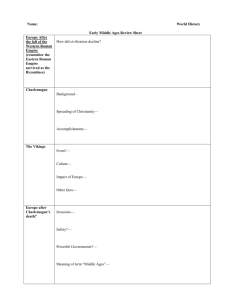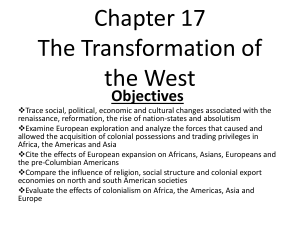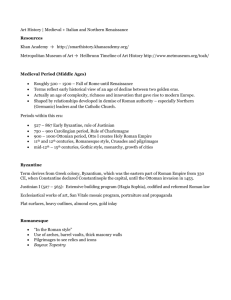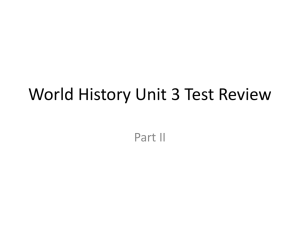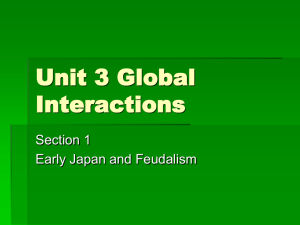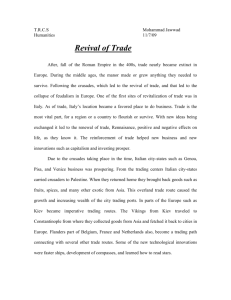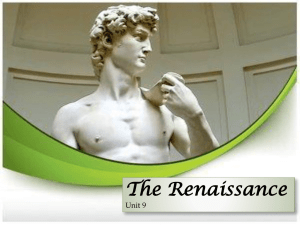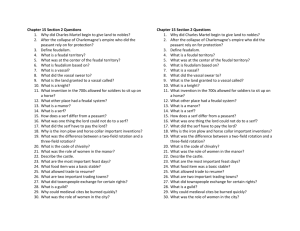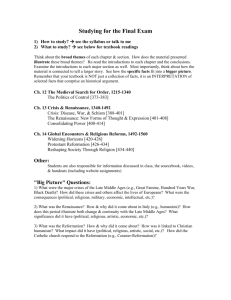File
advertisement
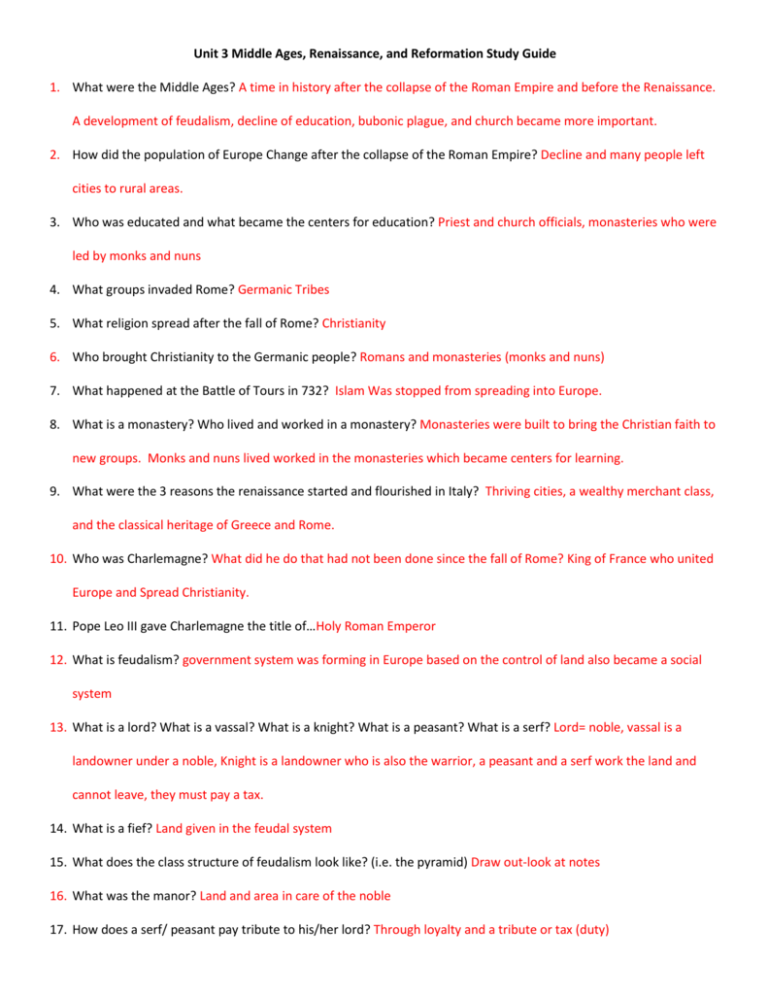
Unit 3 Middle Ages, Renaissance, and Reformation Study Guide 1. What were the Middle Ages? A time in history after the collapse of the Roman Empire and before the Renaissance. A development of feudalism, decline of education, bubonic plague, and church became more important. 2. How did the population of Europe Change after the collapse of the Roman Empire? Decline and many people left cities to rural areas. 3. Who was educated and what became the centers for education? Priest and church officials, monasteries who were led by monks and nuns 4. What groups invaded Rome? Germanic Tribes 5. What religion spread after the fall of Rome? Christianity 6. Who brought Christianity to the Germanic people? Romans and monasteries (monks and nuns) 7. What happened at the Battle of Tours in 732? Islam Was stopped from spreading into Europe. 8. What is a monastery? Who lived and worked in a monastery? Monasteries were built to bring the Christian faith to new groups. Monks and nuns lived worked in the monasteries which became centers for learning. 9. What were the 3 reasons the renaissance started and flourished in Italy? Thriving cities, a wealthy merchant class, and the classical heritage of Greece and Rome. 10. Who was Charlemagne? What did he do that had not been done since the fall of Rome? King of France who united Europe and Spread Christianity. 11. Pope Leo III gave Charlemagne the title of…Holy Roman Emperor 12. What is feudalism? government system was forming in Europe based on the control of land also became a social system 13. What is a lord? What is a vassal? What is a knight? What is a peasant? What is a serf? Lord= noble, vassal is a landowner under a noble, Knight is a landowner who is also the warrior, a peasant and a serf work the land and cannot leave, they must pay a tax. 14. What is a fief? Land given in the feudal system 15. What does the class structure of feudalism look like? (i.e. the pyramid) Draw out-look at notes 16. What was the manor? Land and area in care of the noble 17. How does a serf/ peasant pay tribute to his/her lord? Through loyalty and a tribute or tax (duty) 18. What were the crusades and how many were there? Holy war to rescue Jerusalem from the Muslims; 4 19. What was the Bubonic Plague? Disease carried by fleas on rats from Asia that killed 1/3 of the population. 20. What does Renaissance mean? Rebirth 21. Where did the Renaissance begin and why? Italy; thriving cities, wealthy merchant class, and heritage of classical Roman and Greece. 22. Which social class dominated Italian Renaissance politics? Merchant Class 23. What is humanism? Movement focused on human potential and achievements 24. What does secular mean? Worldly matters 25. What is a patron? Financial supporter of the arts 26. What is realism and perspective as it relates to art? An artistic technique that creates the appearance of three dimensions on a flat surface and portray the human as is. 27. Who was Leonardo da Vinci? Artist, inventor, writer- Mona Lisa, the last supper 28. How did literature change during the Renaissance? began to write for self-expression and to portray the individual 29. Who was Petrarch? 30. Who was Niccolò Machiavelli? Wrote the Prince about how a ruler should gain and keep their power 31. Who was William Shakespeare? Writer that emerged in England during the Elizabethan age. Famous plays are Hamlet, Macbeth, Romeo and Juliet. 32. What is a printing press? Machine invented in china to use moveable type to mass produce written works into books 33. Who was Johann Guttenberg? In 1440 created a new type of printing press. He used movable type and the old style printing blocks to quickly produce books. 34. What is movable type? Characters placed on black to mass print text. 35. What was the impact of the printing press on the spread of ideas and the price of books? More could be produced so it spread the ideas and information. Books became cheaper to produce and more widely owned. 36. Who was Martin Luther? Started the reformation through his 95 these that called for reformation of the church and called out the act of indulgences (paying for forgiveness of sins) 37. What is Protestantism? What is a protestant? Those who broke away from the Catholic Church wanting reform. Protestant= originally a follower of Luther, today it means any Christian who is not a catholic 38. Who was King Henry the VII and what was the legacy of his split from the Pope? He spilt from the Church because he wanted a divorce. He created the Anglican Church. 39. Who was John Calvin? Creator of predestination 40. What is predestination? Idea that God has already decided your fate 41. Who were the Jesuits? In 1540 Pope Paul III created a new religious order called the Society of Jesus. Its members were called Jesuits. The Jesuits were led by Ignatius of Loyola who had dedicated himself to daily prayer, meditation, study. The Jesuits had three main goals: create schools, convert non-Christians to Catholicism, and to stop the spread of Protestantism. 42. What was the purpose of the Council of Trent? The council met from 1545-1563 and were charged with reforming the church. They issued several doctrines that became church law. The church’s interpretation of the Bible was final, Faith and good work was needed for salvation, Bible and Church traditions were the authority, Indulgences were a valid expression of faith. 43. How many people did the Bubonic plague kill in Europe? 1/3 of Europe’s population 44. What is Lay Investitures? The Emperor had the power to appoint church officials such as bishops. 45. Charlemagne was known for……uniting Europe and becoming the 1st Holy Roman Emperor Short Answer: 10 points Choose ONE of the following to answer in a paragraph form. Explain the system of Feudalism. Be sure to include the following in your answer: Lord, Vassal, Peasant, Serf, and Manor Who was Johann Guttenberg and explain the significance of the printing press and movable type the impact on education during the Renaissance Explain what the Reformation was and the response by the Catholic Church. For Extra Credit on test know: the caste system as a way of life, holy cities of Islam, difference between Buddhism and Hinduism, Eastern Roman Empire Capital, what the Phoenicians are known for, what Dharma is.
